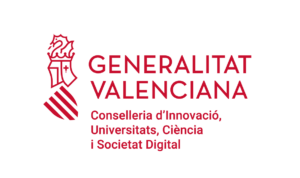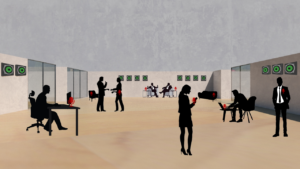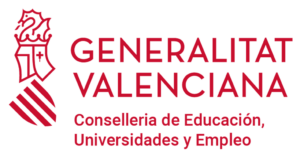Research Projects
2021
2023
2024
Space-Based Composite ADS-B And Multilaterarion System Validation Through Scalable Simulations
SATERA addresses the concept of a space-based composite ADS-B + E-MLAT system using ADS-B and MLAT receiving stations on board small satellites on low Earth orbits.
SATERA Aims
SATERA aims to design and validate a GNSS-independent ATC surveillance system that enables the definition of integrity parameters for space-based ADS-B data and improves air traffic security and safety.
SATERA aims to be a key enabler in optimizing air operations, mainly for long-haul flights over oceanic or uninhabited areas, allowing the reduction of greenhouse gas emissions and the increase of airspace capacity, safety, and security.
SATERA aims to enhance European airspace sovereignty by fostering the provision of critical ATM services by European companies, enhancing the European industrial leadership on the ATC by using satellites and boosting the deployment of space-based ADS-B in Europe.
2022
TRANSFERENCIA DE NUEVAS TECNLOGIAS HABILITADORAS DE SISTEMAS Y APLICACIONES TIC PARA 2030 (INNTA1/2022/53)
Proyecto para la incorporación de un Agente de Innovac ión que se responsabilizará de la transferencia del conocimiento derivado de las actividades de investigación del Instituto de Telecomunicaciones y Aplicacions Multimedia (iTEAM) en el área de especialización de Tecnolo´gias Habilitadoras para sistemas y aplicaciones de Tecnologías e la Información y comunicaciones (TIC). El objetivo principal del Agente de Innovación contratado será fomentar la transferencia de los resultados obtenidos en los proyectos I+D+i de iTEAM hacia las empresas, así como promover una colaboración estable y a largo plazo entre los universos industrial/empresarial y científico/universitario. iTEAM dispone de un plan de trabajo para el período 2022-2024 en el que se establece un programa sólido para mejorar el alcance, los resultados y la visibilidad internacional de iTEAM, así como la transferencia activa de conocimiento para apoyar la economía y la industria. Para ello, el plan de trabajo de iTEAM pretende mejorar las herramientas y habilidades en fotónica, comunicaciones móviles Beyond 5G y 6G, y antenas de onda milimétrica y Terahercios de banda ancha de nueva generación, realizando investigación de vanguardia y mejorando la diversidad y la cooperación entre nuestros equipos. Convocatoria de ayudas de la Agencia Valenciana de la Innovación (AVI) en materia de fortalecimiento y desarrollo del Sistema Valenciano de Innovación para la mejora del modelo productivo para los ejercicios 2022 a 2024 Programa Promoción del Talento (L1. Agentes de Innovación, 1.1 Contratación de Agentes de la Innovación).

2024
MANTENIMIENTO DEL AGENTE DE INNOVACIÓN DEL ITEAM E INTEGRACIÓN EN LA UCIE (INNTA1/2024/48)
EL 1 de noviembre de 2022, el Instituto de Telecomunicaciones y Aplicaciones Multimedia (iTEAM) de la Universidad Politécnica de Valencia (UPV), incorporó a Dña. Alicia María Abad García, como Agente de Innovación según la Convocatoria 2022/2024 del Programa en materia de fortalecimiento y desarrollo del Sistema Valenciano de Innovación para la mejora del modelo productivo para la ejecución del proyecto “Transferencia de nuevas tecnologías habilitadoras de sistemas y aplicaciones TIC para 2030”. El objetivo principal de dicho proyecto, que finalizará en septiembre de 2024, es el de fomentar la transferencia de los resultados obtenidos en los proyectos de I+D+I de iTEAM hacia las empresas, así como la promoción de una colaboración estable y a largo plazo entre los universos industrial-empresarial y científico-universitario. En diciembre de 2023, se constituyó en iTEAM la Unidad de Innovación como Unidad Científica de Innovación Empresarial (UCIE), apoyada a través del Programa en materia de fortalecimiento y desarrollo del Sistema Valenciano de Innovación para la mejora del modelo productivo 2023-2025 con el objetivo de crear una estructura con el personal y los medios necesarios que favorezcan la transformación del conocimiento generado en la investigación de los grupos en proyectos de innovación para trasladarlos al mercado, y de ese modo acercar dicho conocimiento a la empresa. Con la creación de la UCIE del iTEAM, la labor del Agente de Innovación se ha visto fortalecida al alinearse e integrarse en la misma, ejecutando de forma coherente ambos planes de actuación para maximizar el impacto de los resultados y bajo el mismo paraguas al que hemos llamado la Unidad de Innovación de iTEAM. Por otra parte, cabe destacar que la Unidad de Innovación de iTEAM, compuesta por la UCIE y el Agente de Innovación del iTEAM, está vinculada a UPV-Innovación, que es la Oficina de Transferencia de Conocimiento de la UPV, la cual agrega a diversas unidades tanto centralizadas, como ubicadas en las estructuras de investigación de la UPV que operan de forma sinérgica y coordinada para propiciar relaciones con empresas, proteger conocimiento, valorizar y comercializar resultados de investigación y difundir conocimiento. La UCIE y por lo tanto el Agente de Innovación, se beneficia y participa de las actividades de UPV Innovación tales como “EXPLORA UPV” (buscador con acceso a todo tipo de ítems que contienen generación de conocimiento en la UPV), “Match UPV-empresa” (reuniones con empresas relevantes en torno a sus retos), “Innotransfer” (red regional de innovación abierta), “TRL-UP” (acciones de orientación en el aumento de TRL, acceso a financiación PdC, elaboración de materiales para la comercialización, asistencia a eventos y ferias), “SPIN UPV” (definición y puesta en marcha de empresas spin-off), “Newsletter UPV-Innovación” (revista electrónica de difusión de investigación e innovación de UPV) y Inno learning (seminarios y acciones formativas en innovación). Con todo ello, la presente propuesta solicita ayuda para el mantenimiento en las anualidades del 2024 al 2026 del Agente de Innovación del iTEAM, Dña. Alicia Abad García para que, de forma coordinada con la UCIE e integrada en la misma, se alcancen los siguientes objetivos continuistas con el periodo anterior del agente:
- (OBJ1) Potenciación de la actividad de valorización del conocimiento y su transferencia a través de la colaboración entre los agentes implicados en la industria, la investigación y la innovación y las autoridades públicas.
- (OBJ2) Fortalecimiento del ecosistema de investigación e innovación de la CV, añadiendo la Compra Pública Innovadora, como objetivo estratégico a medio plazo del Instituto.

2022
Active reduction of noise transmitted into and from enclousures through encapsulated estructures (IN-NOVA)
The main goal of the IN-NOVA project is to develop the noise-reducing methods by training 13 DCs (10 MSCA Fellows + 3 DCs funded by UK) through intersectoral, multidisciplinary and international joint research in engineering, acoustics and material science, in both academia (universities and research centres) and industry. Scientific objectives of IN-NOVA project are based on a precisely targeted dual noise problem, related to the transmission of noise into and from enclosures through encapsulated structures that concern a vast majority of the population and this can be divided into the two key objectives:
- Develop comprehensive noise-reducing casing solutions that globally control the excessive noise generated and radiated by industrial devices and household appliances, whilst consuming much less energy, sensors and actuators than classical ANC systems. This is referred to as the in-out problem.
- Develop versatile active/passive control techniques for the reduction of noise transmission into enclosures, as represented by vehicle and aircraft cabins. This is referred to as the out-in problem.

This project has received funding from the European Union’s Horizon Europe programme under the Marie Sklodowska-Curie grant agreement number 101073037
2023
Computación y tratamiento de la señal para la sociedad y la industria digitales (COMTACTS2)
The general objective of this project is the design, development and implementation of products, systems, programs and algorithms for signal, image and data processing, which make use of advanced computing architectures and techniques to answer for challenges of an increasingly digitalized society and industry.

2022
Adaptive Sound-processing Technologies foR soundfIeld Deployment: Algorithms, tools and test beds (ASTRID)
The general objective of ASTRID is to contribute to sound-field deployment systems by the design and development of test beds, algorithms and computational kernels, that improve the performance, increase the resiliency, and reduce the energy consumption in order to transfer knowledge and tools to the productive sector. ASTRID will address complex sound deployment scenarios along three research fields: Fast multichannel adaptive algorithms, Distributed and collaborative systems and Psychoacoustic aspects of listening; focused on four related application target domains: Active sound field control, Personal sound zones and spaces, and Computational and mathematical tools for sound processing.

Characterization of Dynamic Acoustic Environments by Machine Learning for Sound Reproduction (DYNAMIC)
VISION: Sounds will be rendered to the users at any location and any time, efficiently, with the help of low-cost devices, maximizing the user’s quality-of-experience.
 OBJECTIVE: To investigate on sound space control applications in real and dynamic environments using inference and classification tools based on novel machine and deep learning techniques, aiming at maximum performance, energy efficiency and feasibility.
Grant PID2021-124280OB-C21 funded by MICIU/AEI/10.13039/501100011033 and ERDF, EU.
OBJECTIVE: To investigate on sound space control applications in real and dynamic environments using inference and classification tools based on novel machine and deep learning techniques, aiming at maximum performance, energy efficiency and feasibility.
Grant PID2021-124280OB-C21 funded by MICIU/AEI/10.13039/501100011033 and ERDF, EU.

2020
VALORIZATION OF A 3D FABRICATION METHOD, METALLIZATION AND INTEGRATION OF HIGH-FREQUENCY DEVICES (ALFREC3D)
The main objective of the project is to carry out the necessary actions so that the patent “Manufacturing method of microwave device based on empty waveguide integrated into substrate” can be transferred with guarantees of success to companies for subsequent exploitation . The object of the patent was the development of a new technique for the manufacture of high-frequency communications devices that is based on three pillars:
- The use of substrate-integrated waveguide technology, which allows the development of a very wide range of communications devices: transmission lines, filters, resonators, power dividers, hybrids, phase shifters, antennas, etc. integrated into a planar substrate (low cost), but presenting the good performance of traditional devices developed in waveguide.
- The use of 3D printing with polymeric materials (plastics) subsequently metallized for the manufacture of communication devices. Polymeric materials are lighter than the metals traditionally used and 3D manufacturing allows for much faster prototyping than traditional methods. Furthermore, the precision obtained with these manufacturing methods is very high. On the other hand, communications devices must be conductive to be able to handle high-frequency signals. Therefore, devices manufactured with 3D printing, if they are polymeric, must be metallized with copper or another high-conductive material, ensuring quality and durability. of that metallization just as the patented method does.
- The modular integration of the developed devices into a complex circuit or system. This integration is achieved thanks to transitions with the rest of the circuit and an anchoring system with screws that allows the device to be easily assembled with the rest of the circuitry, changing it for another if the application requires it or if it is damaged due to some reason, without needing to modify the rest of the circuit.

2022
DEVELOPMENT OF HIGH-FREQUENCY COMMUNICATIONS DEVICES USING ADVANCED ADDITIVE MANUFACTURING AND PLATING TECHNOLOGIES (CAFTAM)
 Current radio communication systems are facing the progressive saturation of the electromagnetic spectrum which, together with increasingly higher bandwidth requirements (transmission speeds), is forcing systems to migrate towards higher frequency bands.
Although there are numerous technologies for the manufacture of communications devices, their commercial success requires great efficiency in terms of cost and mass production along with adequate electromagnetic performance. Additive manufacturing technologies allow for a very wide spectrum of volumetric topologies, in addition to reducing manufacturing time, weight and cost compared to traditional metal milling processes. To provide the device with electrical conductivity, it must be metallized, therefore requiring efficient techniques for this purpose.
For this reason, first a wide range of structures are designed to provide comprehensive solutions to the industry. Next, the use of new materials and manufacturing technologies is analyzed to adapt to the needs of the industry. Finally, new metallization processes and finishes are developed to facilitate the required conductivity of these radio frequency communications devices for terrestrial, maritime and space applications. It is estimated that the use of additive manufacturing technologies for these applications will provide devices up to 10 times lighter, drastically reduce waste compared to machining metal parts, and allow parts to be manufactured that are impossible to make with traditional techniques. CAFTAM is a collaborative experimental development project, led by the Institute of Telecommunications and Multimedia Applications (ITEAM) of the Polytechnic University of Valencia (UPV), who will contribute their experience in the design and optimization of high-frequency communications circuits (filters, antennas, dividers, etc.). AIJU will develop the selected devices by applying high surface and dimensional quality through various additive manufacturing technologies, the Institute of Chemical Technology (CSIC-ITQ) will carry out innovative mixed, chemical and galvanic catalytic metallizing processes on the developed parts. The participating company DISMUNTEL, with experience and knowledge in the field of RFID and control electronics, will contribute to the proposal of the challenge by the industry in the field of telecommunications and in verifying the correct functionality of the devices developed in the real scope.
This collaboration is part of a research project funded by the Valencian Innovation Agency (AVI) within the Strategic Cooperation Projects Program.
Current radio communication systems are facing the progressive saturation of the electromagnetic spectrum which, together with increasingly higher bandwidth requirements (transmission speeds), is forcing systems to migrate towards higher frequency bands.
Although there are numerous technologies for the manufacture of communications devices, their commercial success requires great efficiency in terms of cost and mass production along with adequate electromagnetic performance. Additive manufacturing technologies allow for a very wide spectrum of volumetric topologies, in addition to reducing manufacturing time, weight and cost compared to traditional metal milling processes. To provide the device with electrical conductivity, it must be metallized, therefore requiring efficient techniques for this purpose.
For this reason, first a wide range of structures are designed to provide comprehensive solutions to the industry. Next, the use of new materials and manufacturing technologies is analyzed to adapt to the needs of the industry. Finally, new metallization processes and finishes are developed to facilitate the required conductivity of these radio frequency communications devices for terrestrial, maritime and space applications. It is estimated that the use of additive manufacturing technologies for these applications will provide devices up to 10 times lighter, drastically reduce waste compared to machining metal parts, and allow parts to be manufactured that are impossible to make with traditional techniques. CAFTAM is a collaborative experimental development project, led by the Institute of Telecommunications and Multimedia Applications (ITEAM) of the Polytechnic University of Valencia (UPV), who will contribute their experience in the design and optimization of high-frequency communications circuits (filters, antennas, dividers, etc.). AIJU will develop the selected devices by applying high surface and dimensional quality through various additive manufacturing technologies, the Institute of Chemical Technology (CSIC-ITQ) will carry out innovative mixed, chemical and galvanic catalytic metallizing processes on the developed parts. The participating company DISMUNTEL, with experience and knowledge in the field of RFID and control electronics, will contribute to the proposal of the challenge by the industry in the field of telecommunications and in verifying the correct functionality of the devices developed in the real scope.
This collaboration is part of a research project funded by the Valencian Innovation Agency (AVI) within the Strategic Cooperation Projects Program.

2023
FUTURE RESEARCH ON EMERGING HIGH-FREQUENCY TECHNOLOGIES FOR NEXT-GENERATION SATELLITE COMMUNICATION SYSTEMS (FURTHER-SAT)
FURTHER-SAT project is focused on all available high-frequency technologies: the more classical ones, based on planar circuits and waveguides, the more novel integrated planar waveguides with/without dielectric substrate (i.e., the substrate integrated waveguide -SIW- and their empty versions ESIW and ESICL), and the promising concept of groove gap waveguides. Advanced materials (such as artificial ones -metamaterials-, liquid crystals and high-permittivity ceramics), as well as manufacturing techniques (e.g., high-accuracy milling, additive fabrication methods, Low-Temperature Co-fired Ceramics -LTCC- and micromachining processes), are also investigated.

